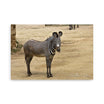Definition of Photography: Understanding this Visual Art
SEO Meta-Description : Discover the definition of photography, its history, techniques and importance. Learn what makes photography a unique and captivating art.
Introduction
Photography is more than just the act of capturing an image; it is an art that combines technique, creativity, and personal vision. Whether documenting events, expressing emotions, or exploring artistic perspectives, photography plays a vital role in our visual culture. This article explores the definition of photography, its history, techniques, and its importance in the modern world.
Definition of Photography
Photography is the art and science of capturing images using light. The term "photography" comes from the Greek words "photo" meaning light and "graphy" meaning drawing or writing. Thus, photography can be literally translated as "drawing with light". It involves using a camera to record images on a light-sensitive medium, such as photographic film or a digital sensor.
History of Photography
1. The Origins
The origins of photography date back to the end of the 18th century with the invention of the camera obscura, an optical device that projects an inverted image onto a surface. However, this was only a first step, as this image could not be permanently fixed.
2. The Invention of Photography
In 1826, Nicéphore Niépce succeeded in creating the first permanent photograph by using a tin plate covered with bitumen of Judea, exposed to sunlight for several hours. This technique, called heliography, marks the beginning of photography.
3. Technological Advances
The history of photography is punctuated by innovations, such as the daguerreotype invented by Louis Daguerre in 1839, which used silver-coated copper plates sensitized with iodine vapor. Then, William Henry Fox Talbot developed the calotype in 1841, allowing negatives to be created on paper.
4. Modern Evolution
With the invention of digital photography in the 1980s and the rise of smartphones equipped with high-quality cameras, photography became accessible to a wide audience, transforming the way we capture and share images.
Photography Techniques
1. Exhibition
Exposure is one of the fundamental elements of photography. It is determined by three main parameters: aperture, shutter speed and ISO sensitivity. Correct exposure allows you to capture images with the right brightness and desired details.
2. Composition
Composition refers to how elements are arranged in an image. Techniques like the rule of thirds, leading lines, and natural frames help create balanced and appealing photos.
3. Focus
Focus is essential to obtain sharp images. It can be manual or automatic, depending on the camera and the photographer's preferences. Depth of field, which depends on the aperture, allows you to control which parts of the image are sharp and which are blurred.
4. Light
Light is a crucial factor in photography. Photographers use natural or artificial light to create specific moods and effects. Mastering light allows you to play with shadows, reflections and contrasts for captivating images.
5. Post-Processing
Post-processing is the process of enhancing photos after they have been taken. Software like Adobe Photoshop and Lightroom can be used to adjust colors, brightness, contrast, and remove imperfections.
Types of Photography
1. Landscape Photography
Landscape photography captures the beauty of natural environments, from majestic mountains to serene beaches. It often requires a good command of light and composition.
2. Portrait Photography
Portrait photography focuses on individuals, capturing their essence and emotions. Portraits can be taken in the studio or outdoors, with careful attention to lighting and posing.
3. Street Photography
Street photography documents everyday life in public spaces. It is often spontaneous and unposed, offering an authentic glimpse into urban life.
4. Fashion Photography
Fashion photography highlights clothing and accessories, often for magazines, advertisements or brand campaigns. It is artistic and stylized, with great attention to detail.
5. Animal Photography
Wildlife photography captures animals in their natural habitat. It requires patience and knowledge of animal behavior to achieve captivating images.
The Importance of Photography
1. Documentation and Memory
Photography plays a crucial role in documenting historical, personal and cultural events, preserving memories and telling stories across generations.
2. Artistic Expression
Photography is a form of artistic expression that allows photographers to share their vision of the world. It provides a platform to explore creativity and express emotions.
3. Visual Communication
In our modern visual world, photography is a powerful tool for communication. It is used in media, advertising, marketing and social media to convey messages in an impactful way.
4. Social Influence
Photography has the power to influence public opinion and stir emotions. Iconic images have played a key role in social and political movements, raising awareness for various causes.
Conclusion
Photography is a complex and fascinating art that goes far beyond simply capturing images. It combines technique, creativity, and personal vision to create unique works of art. Whether you are an avid amateur or a seasoned professional, understanding the definition and basic principles of photography is essential to improving your skills and fully appreciating the art. Photography continues to evolve with modern technology, but its essence remains the same: capturing light to create images that tell stories and evoke emotions.
FAQs
What is exposure in photography? Exposure in photography is the amount of light that reaches the camera sensor, determined by aperture, shutter speed, and ISO.
How important is composition in photography? Composition is essential to creating balanced and appealing images. It determines how elements are arranged in a photo, influencing its visual impact.
How has digital photography transformed photography? Digital photography has made taking pictures more accessible and portable, allowing for instant processing and sharing of images.
What is depth of field? Depth of field is the area of sharpness in a photo. It depends on the aperture of the lens and can be used to isolate subjects or create blurred backgrounds.
Why is light so important in photography? Light determines the mood, shadows, and highlights in a photo. Mastering light can help create visually captivating images.
What are the benefits of post-processing in photography? Post-processing is used to improve photos after shooting, adjusting colors, brightness, contrast, and removing imperfections to achieve perfect images.




































































Leave a comment
All comments are moderated before being published.
This site is protected by hCaptcha and the hCaptcha Privacy Policy and Terms of Service apply.